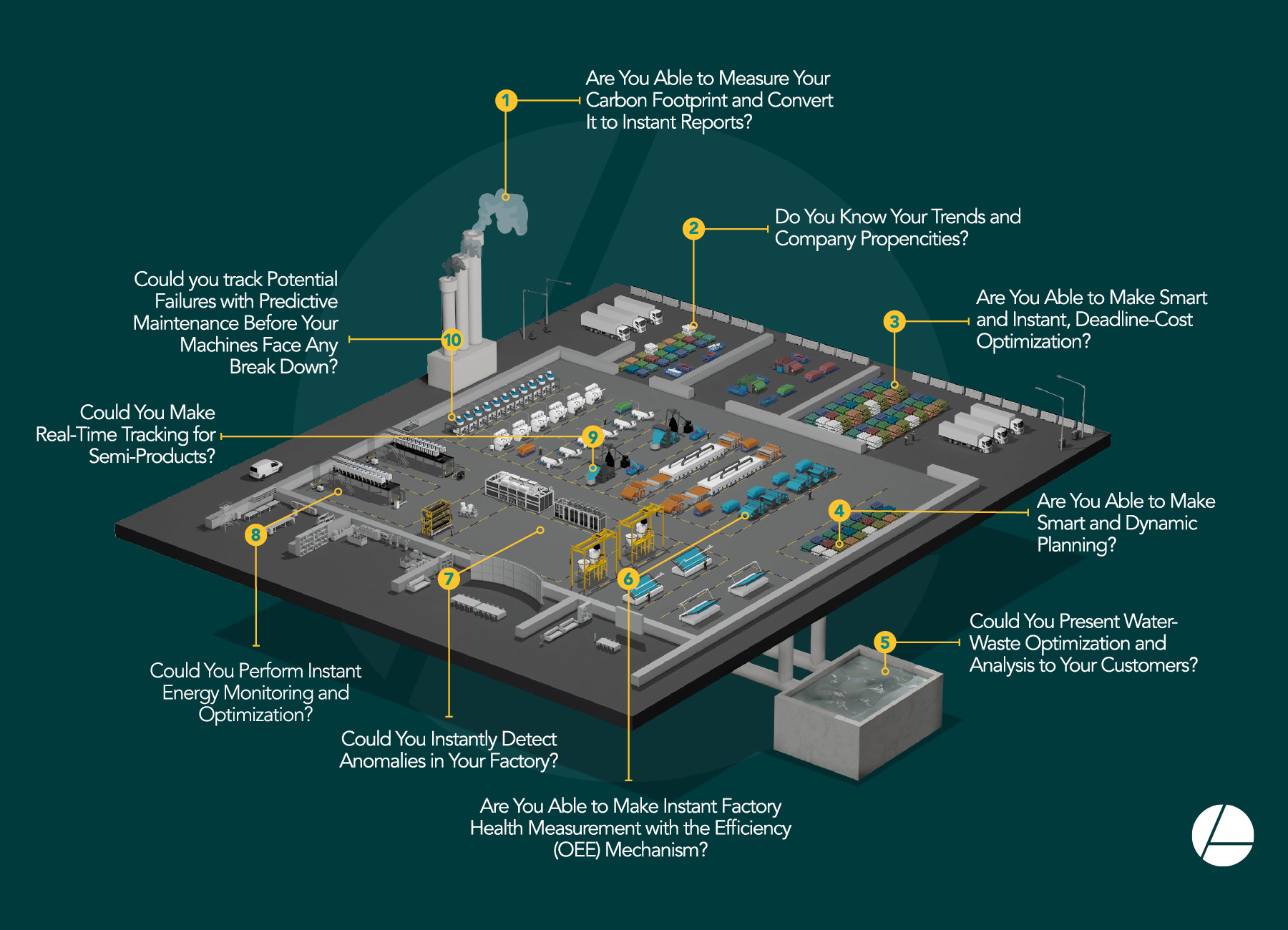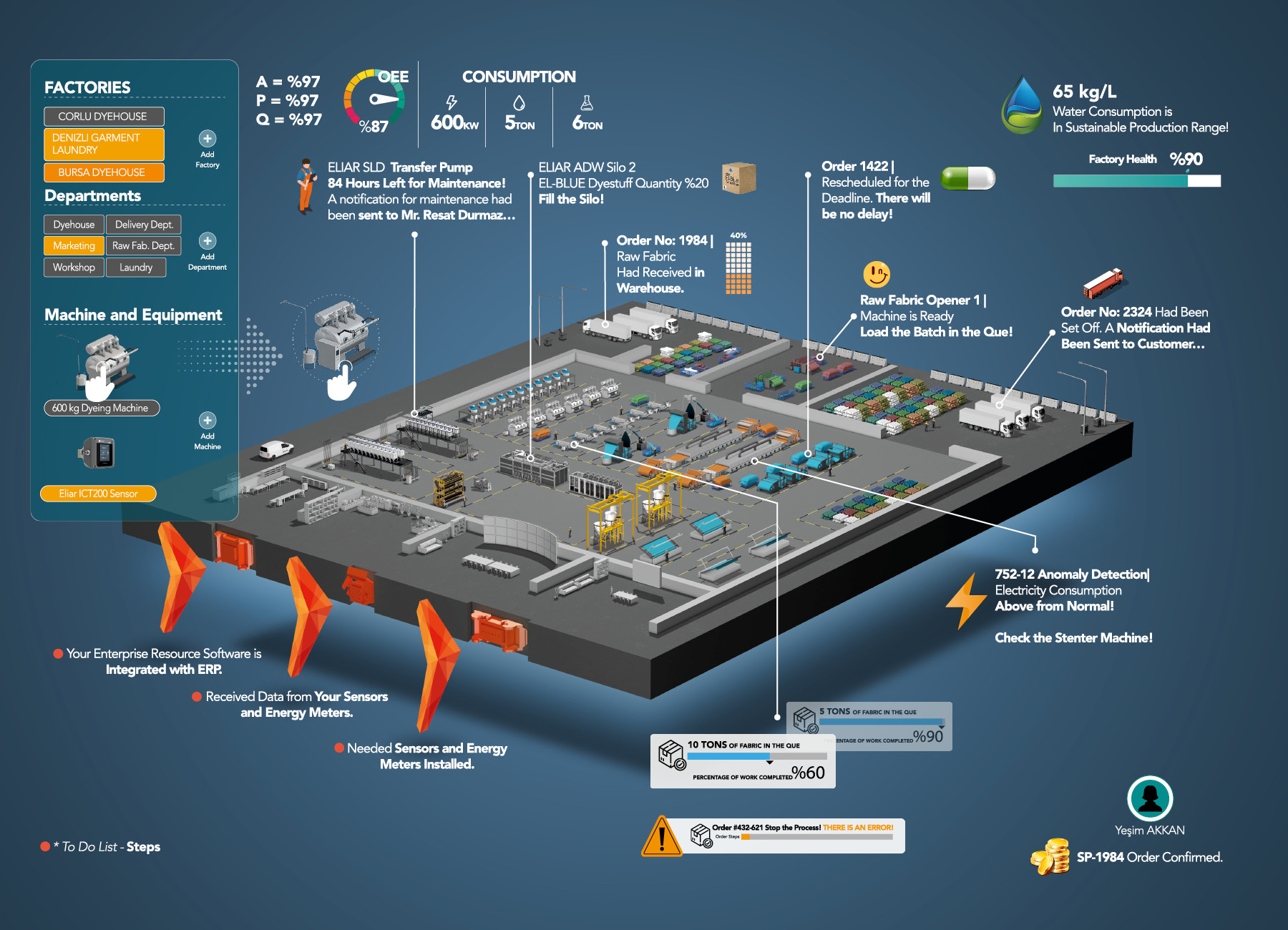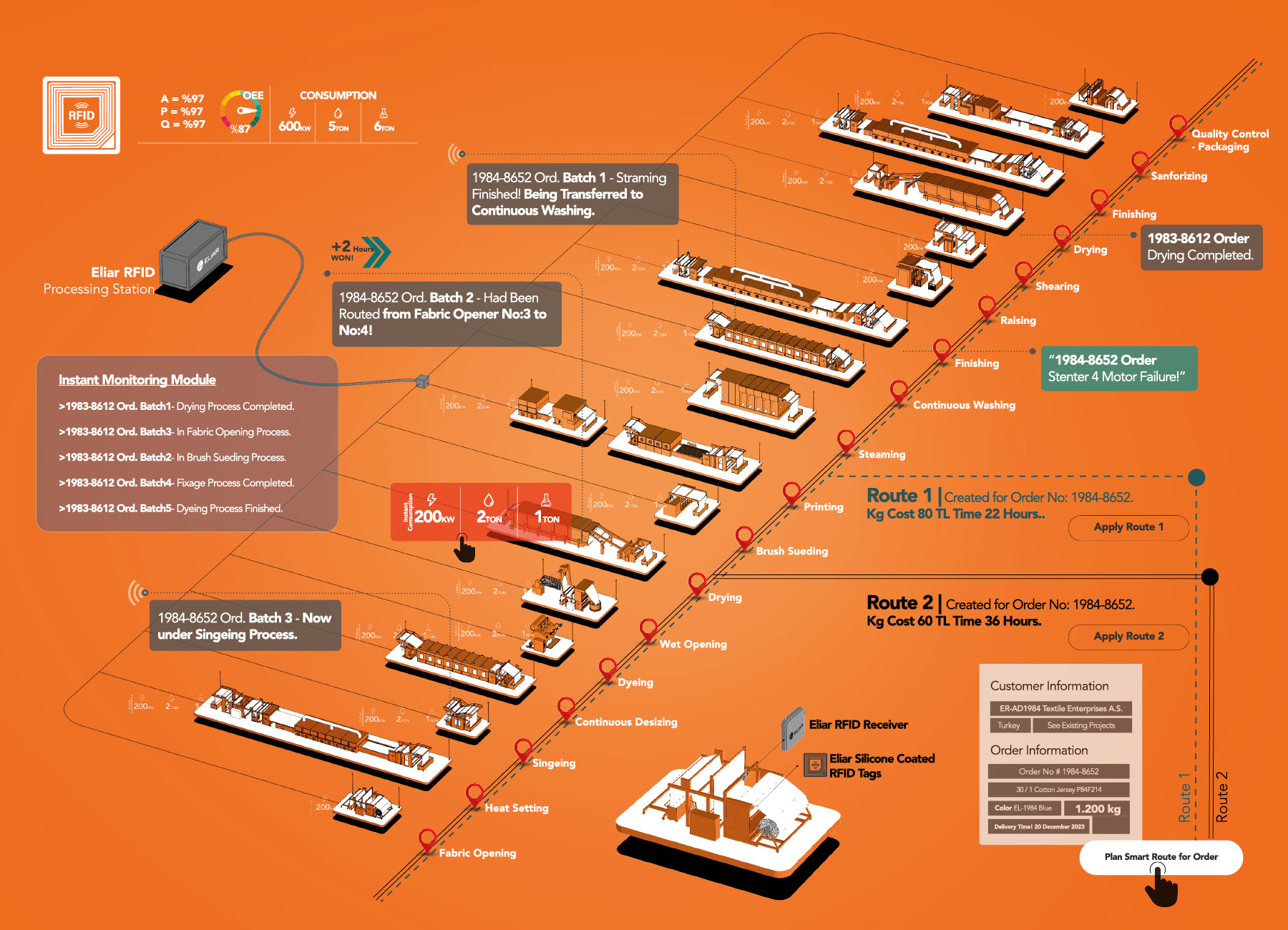Language
You can read the magazine in one of the following languages
Ever growing costs, never ending market demands, incalculable expenditures, changing customer demands, untraceable production line, failure in locating the errors, just to name a few. It is obvious that textile wet processing is only getting tougher, and Eliar knows there is a lot to be improved.
Considering the need for transformation of the textile industry within the framework of sustainable production, Eliar has determined that in next decade there will be even more challenges than today, and the success will be based on three main steps: sustainable and clean production management, real-time cost and deadline management, and predictive and intelligent production management.

Digitalization is Key
Today, it is no longer enough for factories to only to be productive and profitable. The use of energy, chemicals, dyestuffs and water while producing both consumes limited natural resources and harms the environment by generating CO2 emissions and wastes.
Installing a digitalized production process in a factory can provide instant monitoring of each stage of production in a way that is transparent, backward traceable and integrated with supplier channels. It helps to keep consumption at a minimum level by optimizing production.
Digitalization of textile processes also helps check compliance with MRLSL (Restricted Substance Production List) and ZDHC (Zero Waste in Hazardous Chemicals) instantly, as well as provides data and reports for international audit institutions on cleaner production.

Real-Time Analysis
When flying a massive aircraft, the pilot makes many decisions by looking at a few critical key indicators generated from thousands of data on the plane.
Executives in textile factories need hundreds of reports and data to make sure that the machines, human resources, energy, and raw materials in their factories are used effectively. Most of the time, these reports are too late; it reaches them as the aircraft engine catches fire and stalls towards the sea.
Whereas a digitalized factory by Eliar instantly shows the most critical data needed for seeing the whole picture.
Today, OEE is the most basic indicator used to measure the efficiency of all factories. It expresses the capacity of a factory, how much it can produce using this capacity and how much of the production is of the expected quality as a single number.
Whether a factory’s capacity decreases, it becomes unable to use its full capacity‚ or even if it experience errors in production, Eliar’s Digital Factory is able to show these instantly and provide executives with an in-depth analysis to reach the source of the problem.

Instant Trend and Anomaly Analysis
While thousands of transactions are carried out in a textile factory, hundreds of thousands of data are generated. Raw material and energy consumptions, downtimes, repairs, errors, losses, wastages, malfunctions. Thousands of transactions that cannot be controlled cause increased costs, delayed products and, thus, customer dissatisfaction.
The Eliar Digital Factory instantly monitors every single process, from the cabin temperatures of a night shift and the motor chain speed, to the tower speeds in a dyeing machine and heat exchanger efficiencies.
It checks the accuracy of the processes, calculates what it consumers, predicts malfunctions before they occur and informs the user if there is an abnormal situation. It predicts the production orders that will exceed the planned cost or the ones that do not reach the deadline and communicates this information before any issues arise.
Aggregating all the improvements to systems, the possible annual saving created by automation and digitalization is undeniable. The future will benefit innovative and idealistic enterprises that provide sustainable production, and those that do not place a focus on this now will find themselves left behind.

